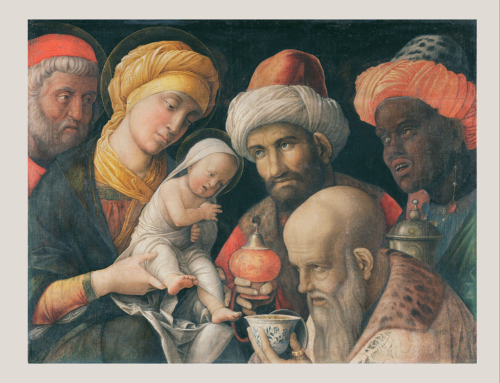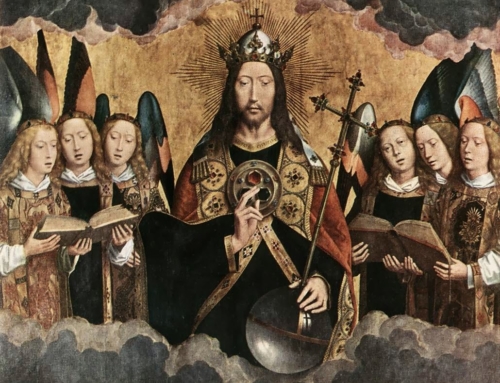One of the advantages of studying church history is that you come to realize that when it comes to heresy and schism there is nothing new under the sun. The same old distortions, faulty priorities, half truths and falsehoods hang around the church like a bad smell. In fact, the bad smell is that of decaying flesh. Heresy and schism are dead things. Dead wood.
Sanctity, on the other hand is always fresh, original and authentic. Sanctity has life, vigor and joy. Heresy and schism is miserable. The closer you get to Jesus, Mary and the saints the closer you get to all that is original, alive and both ancient and new at the same time. The further you go from Jesus, Mary and the saints the more we descend into sour attitudes, blaming others, self righteousness and a negative spirit.
Most of the heresies and schisms of the early church are still around today in one form or another. They rarely take formal shape. More often they lurk around in attitudes, postures and outbursts. In other words, nowadays you won’t find a group labelling themselves as “Arians” or “Monophysites”. To be sure there are plenty of denominations and churches that have their own particular brand, but those brand names are selected or assumed from some founder: Wesleyan and Lutheran, or some distinction on their founding history or theology: Anglican and Baptist.
The heresies and schism infest the range of Christian denominations now more as attitudes and practices. Looking at the ancient schisms and heresies helps us look in the mirror and ask whether we have fallen into some of the typical attitudes and practices of these groups.
One of the schisms that afflicted the church in the fourth and fifth centuries in North Africa was Donatism. The Donatists were rigorists. In other words, they were strict in their observance of the church’s rule and regulations. During the time of persecution the officials in North Africa permitted Christians to escape martyrdom by simply handing over their Scriptures to the authorities. This was a symbolic act of submission by authorities who were obeying the edict against Christians, but were sympathetic to their cause. “Here now. You know I don’t really want to persecute you and there is a way around this. Why don’t you just hand over your Bible to the guards here and they will accept that action as your submission to the emperor and you can go on your way.”
The Christians who gave in were called traditors which means “one who hands over” and this became the root of the word “traitor”. The Donatists insisted that those who gave in were traitors. Some said they could never again be admitted to the sacrament and confession and absolution was not available for them. Others said they could return to the church, but subjected the traditors to extreme acts of public penance.
Most crucially, the Donatists decided that the sacraments celebrated by the traditor clergy were invalid. The traditor bishops and therefore their ordinations were deemed invalid and by extension all the sacraments of all the traditor priests and all the priests ordained by traditor bishops were also invalid. This, of course, led to schism because the Donatists had to have their own bishops, their own church and their own priests and sacraments which were untainted.
Pope Militades condemned the Donatists and St Augustine had to contend with them as Bishop of Hippo. As a formal heresy and schism the Donatists eventually disappeared toward the end of the fifth century.
The Donatist problem, however has hung around. Predictably, whenever a reform movement has blossomed which criticizes the corruption and immorality in the church, the reformers are accused of being present day Donatists. This is a problem because we need reform movements in the church. We need prophetic voices to speak out against immorality and corruption and just writing them off as heretics doesn’t accomplish much.
Furthermore, the Donatists are often the very best and devoted of the faithful. They do apply their rigorous standards to themselves and they genuinely wish to be faithful followers of Christ. These are not bad people. Indeed, they strive (and often succeed) in being the very best of people but they fall into the trap of Donatism.
So where does one find balance? A good example is a comparison between St Francis and Martin Luther. Both faced a church riddled with corruption and immorality. Francis submits to Pope Innocent III and stands barefoot in the snow not daring to go against the Lord’s anointed. Martin Luther fosters not only dissent, but rebellion. He forms a group and makes an action plan. He rallies “the resistance”. That is one of the signs of Donatism today–not the spirit of humble reform by becoming a saint oneself, but the spirit of changing other people–by force if necessary.
The second sign of Donatism is a sectarian mentality. Forgetting that the wheat and the tares grow together and that the kingdom is like a net that is thrown wide and gathers all kinds of fish, the Donatists see the church as a small group of the true disciples. In a church reeling from heresy, immorality and corruption they see themselves as the last of the true and faithful few.
A third sign that a reform movement is declining into Donatism is the tendency to blame others while exonerating oneself. The insidious thing about this self righteousness is that we are blind to it in ourselves. That’s why it’s self righteousness. When we’re self righteous we really, honestly cannot see it, but a sure sign of it is an addiction to blaming others and seeing others who are worse than ourselves.
The fourth sign is that the Donatists are fissiparous. They turn against their own and fight among themselves. They split. The Donatist heresy in North Africa in the fourth and fifth centuries fostered so many splinter groups that people lost count.
The fifth and sure sign of Donatism today is the denial of validity of sacraments based on the bishop or priest’s wrongdoing. When you hear Catholic voices accusing others of being “traitors” and denying the validity of their sacraments you’re seeing Donatism today.
It should be noted that these five signs often crop up in religious life in one way or another and no single one of the signs is determinative. However, if we see all five pretty much working together in high gear we’re witnessing present day Donatism.
What to do about it? Not much really. St Augustine’s efforts to counter the Donatists with sound teaching were moderately successful, but self righteous schismatics are a pretty tough lot and arguing with them will get you mired in endless debates which will be like wrestling in molasses. Rolling around in the sticky sweetness of their pious phrases and learned quotations from selected church documents, you’ll get stuck like Br’er Rabbit in the Tar Baby.
When the argument ends the Donatist will usually go their own way feeling even better that they have beat you in an argument and proven themselves correct yet again. If you decline to argue with them they will claim victory and also go away feeling even more proud of themselves.
Best thing is to recognize what’s going on and leave it.
Bless them as they go and hope and pray their sincere devotion and genuine love for truth will bring them close to the Lord and that they will one day find their way home.







St Augustine is my Patron. And it’s the first time I hear about “Donatism”.
Reading this blog on Donatism again I suppose that You, dear Father, are experiencing similar behaviour in your country, without naming any. Thus I think, compared to the situation in Belgium, you speak about groups “for Medjugorje”, for Mario of Brindisi, for messages of MDM of Ireland, for attending Holy Mass as prior to the Vatican Counsel a.s.o. Indeed we all need to see an to hear, and to get carried away. May the Holy Ghost lead us all.
Hi Father! Have you ever read “Enthusiasm” by Fr Ronald Knox? I’m only a few chapters in so far. The book is a broad sweep of the “enthusiasts” or “rigorists” in the history of the Christianity.
So far, one take-away for me is that from the beginning orthodox Catholicism has often been accused of being “soft” by the hardliners. The rigorists often take Catholic holiness and go “one better”, thereby being in a position to say that they are the ones who really take their faith seriously and the Church is being too soft.
Comparing what Fr Knox says with much of internet Catholicism makes the book a fascinating read for our times.
Yes. It’s a terrific book and one of those books that somehow disappeared from my shelves long ago–probably lent and never returned.